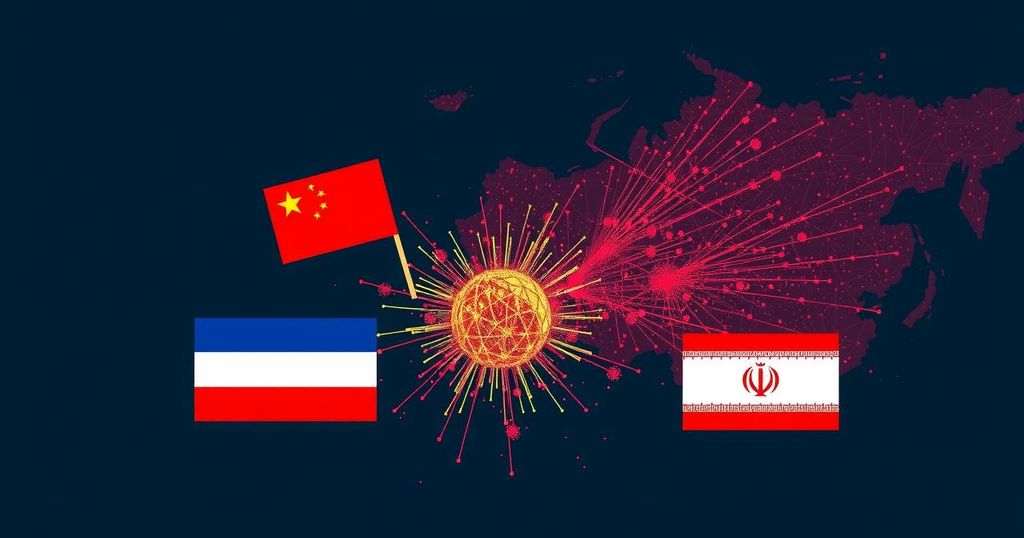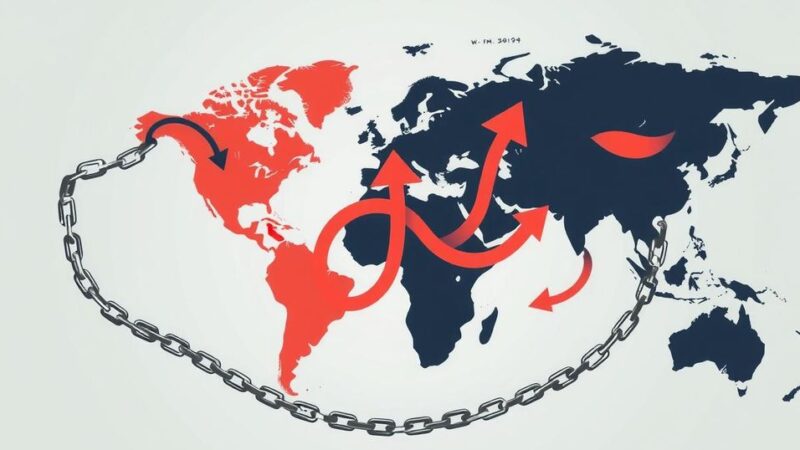Concerns are escalating within U.S. circles regarding the formation of an alliance between China, Russia, North Korea, and Iran, often labeled as a new ‘axis of evil.’ This grouping supports Russia’s military ambitions amid the Ukraine conflict and poses significant geopolitical risks. U.S. officials highlight the historical parallels and implications of this burgeoning partnership, emphasizing the need for a decisive response to prevent destabilization of the global order.
U.S. officials are expressing increasing concern regarding the growing alliance among China, Russia, North Korea, and Iran, now being referred to by some as a new “axis of evil.” This term was notably invoked by U.S. Defense Secretary Lloyd Austin during a recent visit to Rome, where he confirmed the presence of North Korean troops in Russia, likely to assist in the conflict in Ukraine. This development follows Russia’s participation in naval exercises with Iran. Across this bloc, each nation has supported Russia’s military operations: Iran has supplied missiles and drones, North Korea has contributed artillery shells, and China has provided dual-use technologies and essential industrial components. Representative Rob Wittman, vice chairman of the House Armed Services Committee, articulated these fears in an online forum hosted by the Center for a New American Security, drawing historical parallels to the early 20th century: “We’ve seen the emergence of Axis of Evil back in the late 1930s… We find ourselves at that same crossroads today where we have nations that do not believe in the same things that we believe in.” The phrase “axis of evil” was originally coined by former U.S. President George W. Bush in 2002 to categorize countries that harbored terrorist sentiments. Today, this characterization is being applied to the coalition of China, Russia, Iran, and North Korea. U.S. Secretary of State Antony Blinken has termed these nations as revisionist powers engaged in a fierce competition to reshape international norms. He asserts that while this coalition lacks a formalized alliance, the actions of these countries necessitate a decisive response from the United States to avert escalatory outcomes. Wittman elaborated on the threat posed by these nations, suggesting they possess capabilities far surpassing those of Nazi Germany during World War II. He highlighted the integration of technologies among these countries, pointing out, “as you look at drones… you find Chinese printed circuit boards in there.” Furthermore, he noted that North Korean artillery is being employed in the ongoing Ukraine conflict, and Iranian drones are being utilized by Russia. Experts like Merrill Matthews have indicated that this emerging partnership is not only seeking territorial expansion but also aims to develop an economic independence insulated from Western economies. Christopher S. Chivvis emphasizes that China’s involvement is critical; without it, the alliance would not pose as significant a threat. Chivvis illustrated how tensions in one area, such as a possible Chinese incursion against Taiwan, could provoke simultaneous aggressive actions from Russia in Ukraine or within NATO territories. Blinken described the relationship among these four entities as largely transactional, acknowledging shared interests in challenging the United States and the global order. He articulated that while their collaborations involve evolving risks and trade-offs, they are fundamentally united in their opposition to U.S. hegemony.
The term “axis of evil” was initially popularized in the early 2000s by President George W. Bush, aimed at grouping nations that were seen as threats to international security due to their support for terrorism. The current geopolitical climate, influenced by the Russo-Ukrainian war and other regional conflicts, has spurred U.S. officials to revisit this terminology in the context of the emerging partnership between China, Russia, Iran, and North Korea. These countries have been engaging in military cooperation, technological exchange, and economic partnership to counterbalance Western influence, primarily that of the United States. As global tensions rise, the implications of this alliance for international stability have become a crucial area of focus for U.S. policymakers and defense experts.
In summary, the collaborative efforts of China, Russia, North Korea, and Iran signal a troubling resurgence of an adversarial bloc reminiscent of historical threats. Each of these nations contributes unique capabilities and resources that bolster their collective strength, heightening existing global tensions. As U.S. officials recognize the potential for destabilization stemming from this alliance, it becomes imperative for the United States to develop effective strategies to address these emerging geopolitical challenges. This situation not only poses risks of military conflict but also threatens to reshape the international order and economic systems.
Original Source: www.voanews.com







